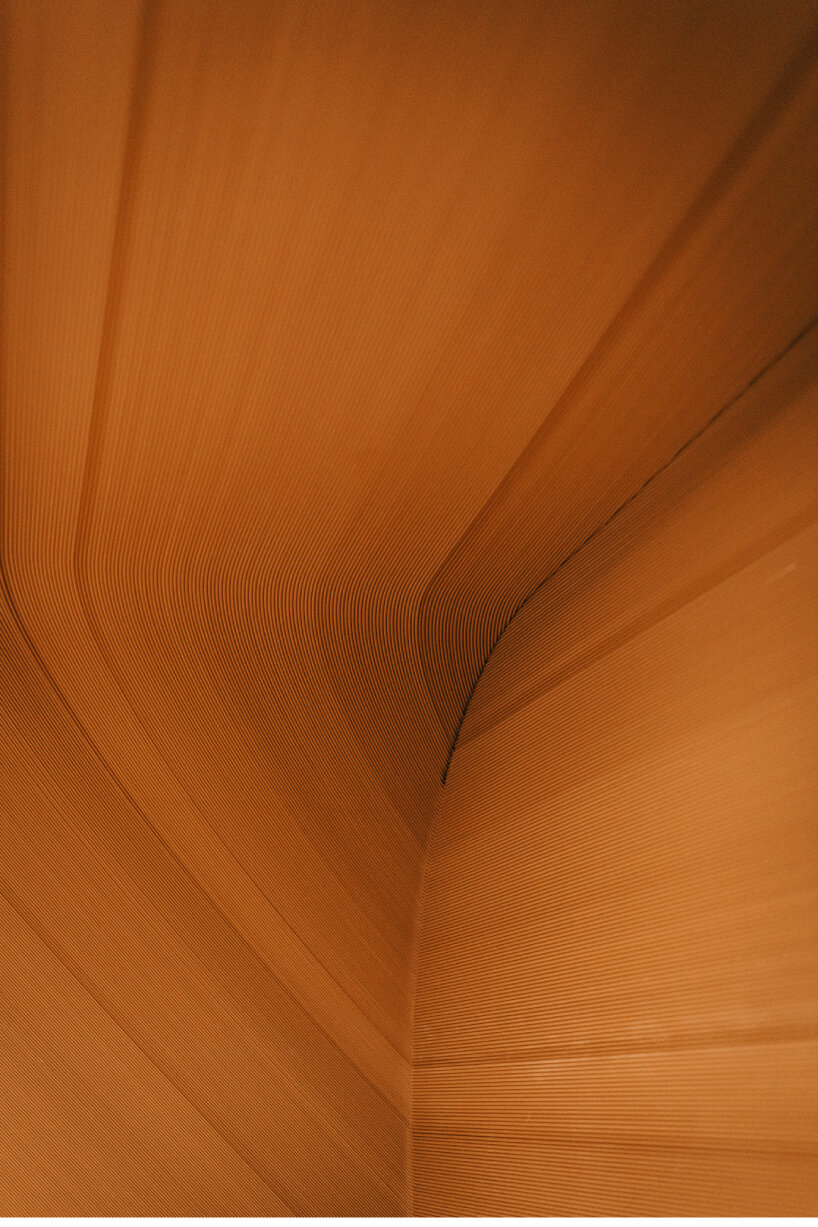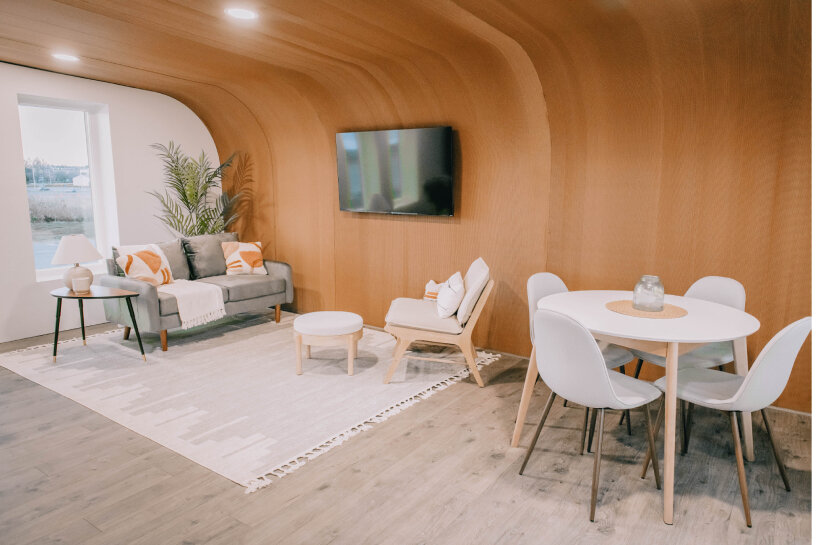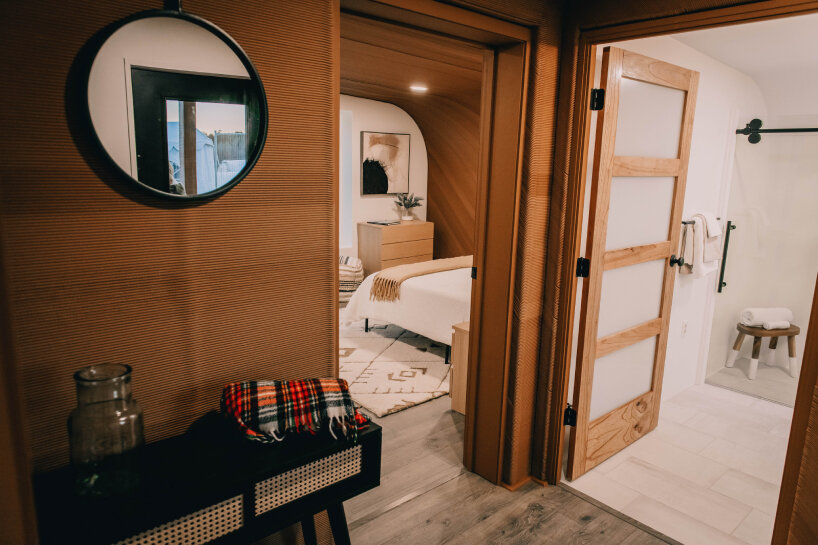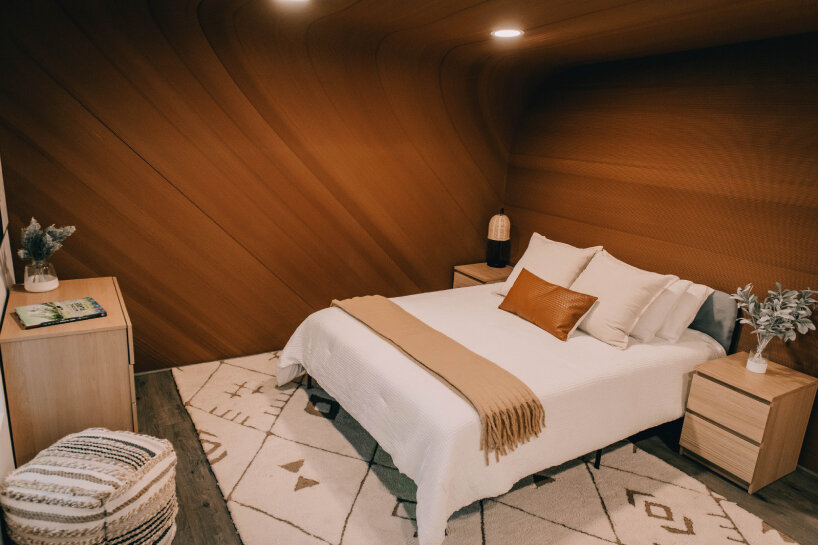
world’s first 100{833736ef333566f6502cdebaaa8c1006aee7f6f644158cfddacfa746ee20c4df} bio-based 3D-printed home in maine is built with sawdust and corn
BioHome3D from wooden fibers and bio-resins
The College of Maine Sophisticated Constructions and Composites Centre (ASCC) spearheaded building BioHome3D in Orono, Maine, the world’s initial 3D-printed household manufactured solely with bio-primarily based supplies these as wooden flour, or fantastic sawdust, blended with a binder designed from corn.
Layer by layer, the wooden house was 3D printed making use of an industrial polymer printer at the ASCC where by the was little to no design waste many thanks to the precision of the printing approach. The 600-sq.-foot residential prototype functions 3D-printed floors, walls, and roofs from wooden fibers and bio-resins, and the dwelling is completely recyclable and hugely insulated with 100{833736ef333566f6502cdebaaa8c1006aee7f6f644158cfddacfa746ee20c4df} wood insulation.

pictures courtesy of the College of Maine Advanced Constructions and Composites Heart (ASCC)
Stepping inside of the home, the heat and inviting perception greets the property owners from the onset. Earth colours determine the visual theme of the prototype with the lush wood encasing practically the complete environment with its hushed-down hue and presence.
The 3D-printed wooden bonds the walls and the ceilings and varieties a sloping curve that shelters the property owners. There is a residing room, kitchen, bed room, and a dedicated workspace that shares the sleeping location. The quantity of home windows may well not be generous, but the lights inside of could possibly make up for that.

living place
outfitted with thermal sensors for tests
BioHome3D is positioned on a foundation just outside the University of Maine Innovative Constructions and Composites Heart and equipped with thermal, environmental, and structural monitoring sensors to check how BioHome3D performs by means of frosty climates.
The gathered knowledge can support the scientists in tweaking the structure and elements to let for the output of foreseeable future dwelling styles that can adapt to climate adjustments. The entrance of BioHome3D will come by means of as a prospective alternative to the rising housing disaster and labor shortage that the point out of Maine is struggling with.
Governor Janet Mills of Maine states that the University of Maine and its prototype can assistance address these critical worries. ‘With its progressive BioHome3D, UMaine’s Superior Buildings and Composites Centre is thinking creatively about how we can tackle our housing shortage, fortify our forest solutions business, and produce persons a risk-free area to reside so they can lead to our financial system,’ suggests Mills. ‘While there is continue to more to be done, this improvement is a favourable move ahead.’

entrance to bedroom and lavatory
Earning reduced-incomes residences achievable
BioHome3D takes advantage of the type of technological know-how that can ease labor shortages and source chain difficulties that are driving substantial costs and constricting the supply of cost-effective housing. As the University of Maine’s group places it, there is a lot less time required for on-internet site constructing and fitting up the house due to the fact of the automated producing that takes area off-web page.
By printing working with ample, renewable, locally sourced wood fiber feedstock and applying the sophisticated manufacturing processes and materials created at the university, relying on a non-sustainable source chain can be lessened and make lower-profits households in the long term much more accessible and feasible when getting suited to their homeowners’ needs and wishes for their areas.
‘Importantly, as the producing technology and materials manufacturing are scaled up, homebuyers can hope a lot quicker delivery schedules,’ the university writes. BioHome3D was produced with funding from the U.S. Department of Energy’s Hub and Spoke program in between the UMaine and Oak Ridge National Laboratory. Its associates contain MaineHousing and the Maine Know-how Institute.

bed room